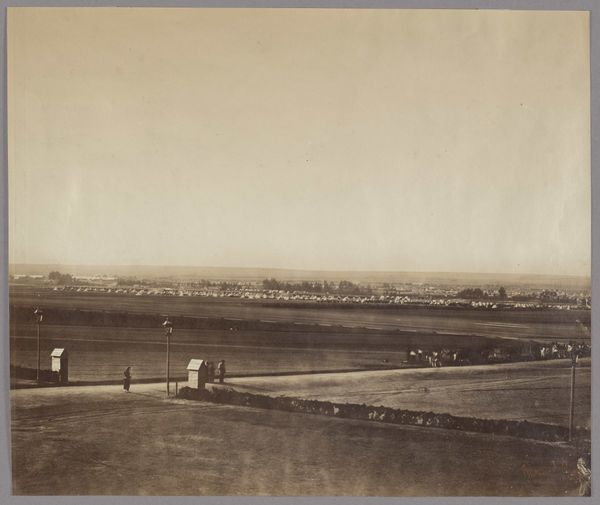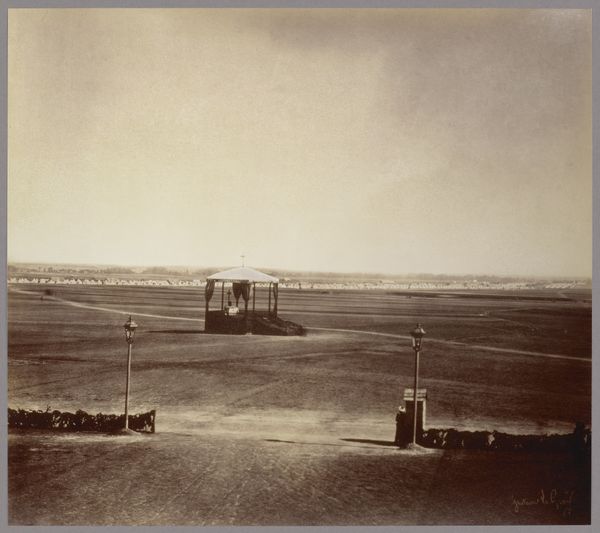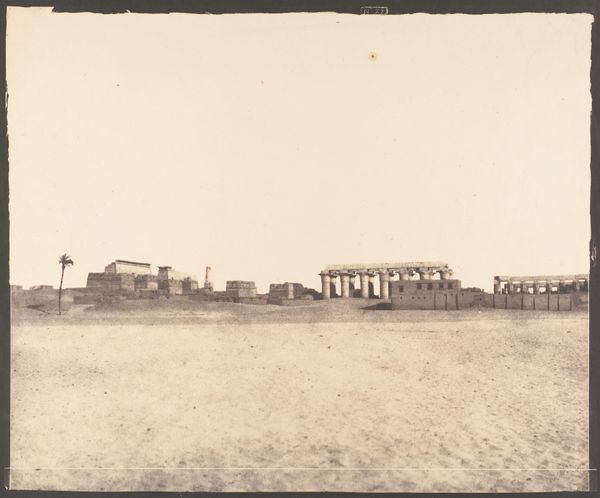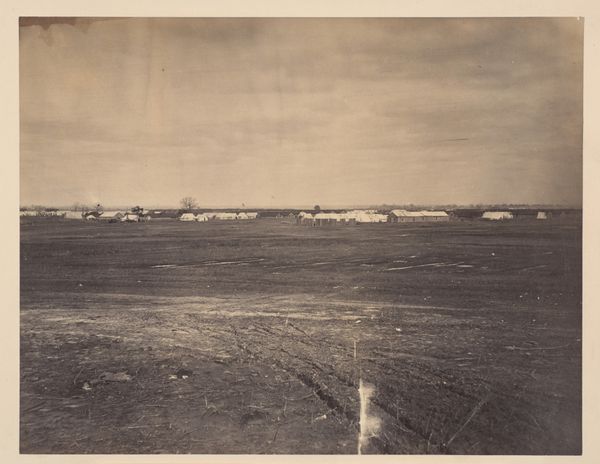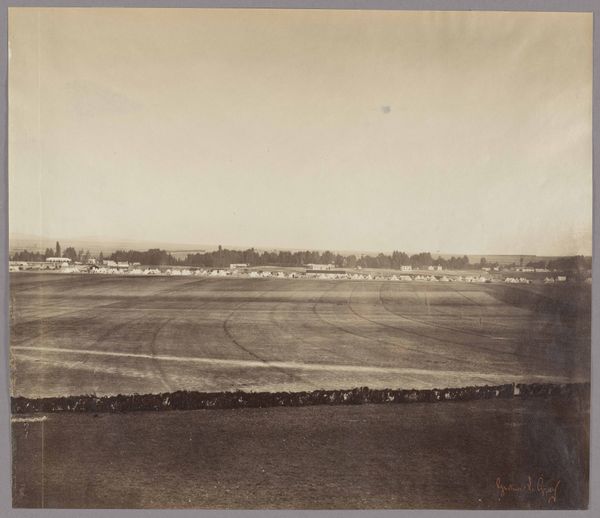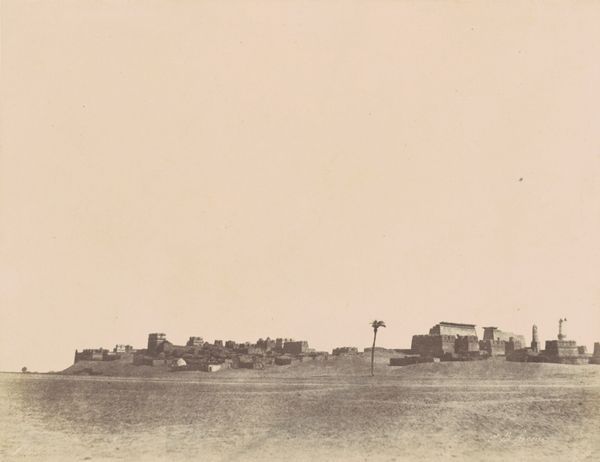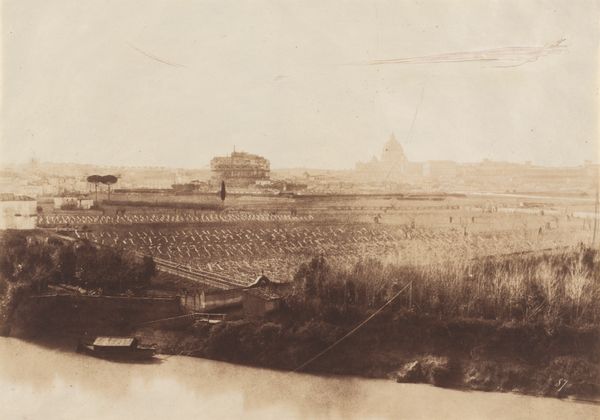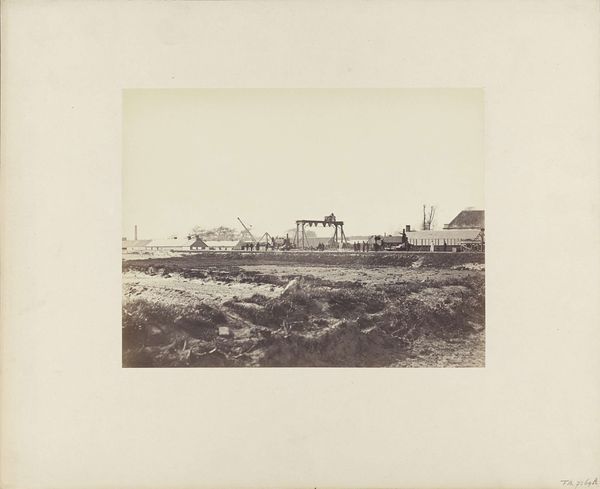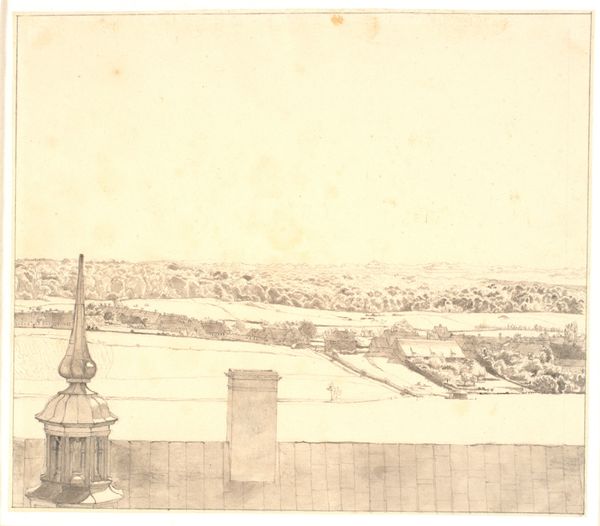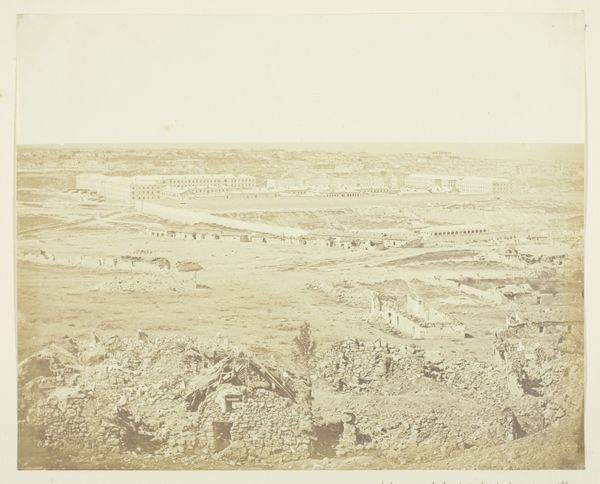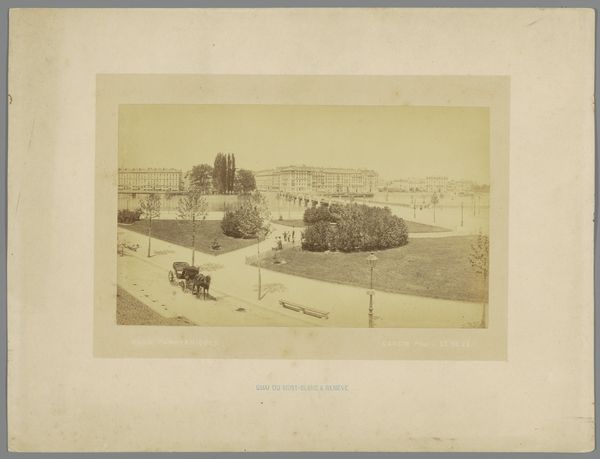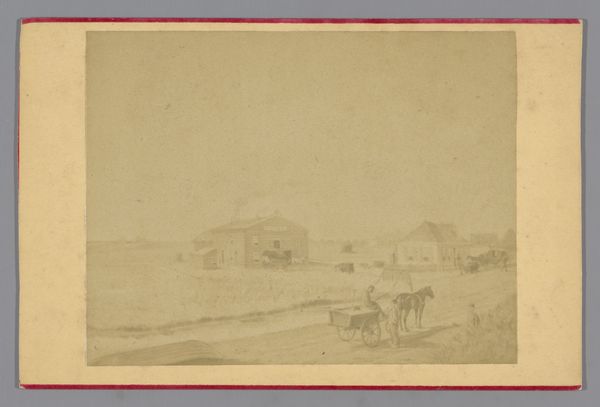
albumen-print, print, plein-air, paper, photography, albumen-print
#
albumen-print
#
neoclassicism
# print
#
plein-air
#
landscape
#
paper
#
photography
#
france
#
natural palette
#
albumen-print
#
building
Copyright: Public Domain
Curator: Gustave Le Gray’s "The field of maneuvers in Châlons-sur-Marne," created in 1857, presents a wide, sweeping vista, rendered in the photographic medium of albumen print. The piece, housed here at the Städel Museum, displays an intriguing tension between military precision and pastoral calm. Editor: It strikes me as somewhat austere, wouldn't you say? The light, the pale tonality of the albumen, combined with the stark horizontals of the field… it almost feels like a blank slate despite all the implied activity. Curator: Indeed, there’s a visual austerity. Yet, consider the inherent symbolic charge. These training fields—Châlons-sur-Marne specifically—became powerful signifiers of French military prowess under Napoleon III. Le Gray’s photograph freezes a moment of national aspiration. Editor: I see that now. But is there not also, paradoxically, a flattening effect? The figures of soldiers in the distance seem abstracted, almost becoming part of the landscape itself. Is Le Gray suggesting a symbiosis between man and nation? Curator: It is very astute to point that out. In the formal language of neoclassical composition, such calculated flattening reinforces the conceptual structure; like a theater backdrop to showcase the military in grand spectacle, a modern stage set. It abstracts them from gritty conflict towards almost idyllic form. Note also Le Gray's skill in merging two negatives, the land, and sky, into one composition. Editor: The use of those negatives does raise interesting questions. Could that piecing together be considered an act of ideological shaping? The choice of what sky and what field says much about intended meaning. This work transcends mere record, aiming to establish itself instead as lasting memory and cultural statement. Curator: Precisely, "The field of maneuvers…" captures the visual semantics of France's mid-19th-century identity construction, realized through a novel artistic medium. Editor: Looking at it, I feel the grand aspirations but also a subtle hint of what might lie beneath: the ever-present potential for disruption and war within such seemingly organized endeavor. Curator: Yes, an intricate work with multifaceted impact. It invites a prolonged consideration about military exercise as more than simple spectacle.
Comments
stadelmuseum almost 2 years ago
⋮
Gustave Le Gray belonged to the circle of photographers, regularly commissioned by Napoleon III to document his prestige projects. Public manoeuvres and displays at the newly built military base at Châlons-sur-Marne northeast of Paris served the military self-representation of the Second Empire. For his panorama of the great exercise field, Le Gray required six individual shots, which he then carefully cut and assembled to achieve the impression of seamless continuity. His selection of detail with the central horizon line further emphasizes the ample space of the terrain.
Join the conversation
Join millions of artists and users on Artera today and experience the ultimate creative platform.
